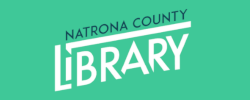The anxious generation : how the great rewiring of childhood is causing an epidemic of mental illness
(Book)
Author
Published
New York : Penguin Press, 2024.
Physical Description
385 pages : illustrations ; 25 cm
Appears on these lists
Status
Summary
Loading Description...
Also in this Series
Checking series information...
Copies
| Location | Call Number | Status |
|---|---|---|
| Natrona Co. Public Library - New Item | 006.702 HAIDT | Checked out |
| Location | Call Number | Status |
|---|---|---|
| CCL - Douglas - Being acquired by the library | XX(2547100.6) | On Order |
| Campbell Co. Public Library - Nonfiction | 305.2309 HAIDT 2024 | Checked out |
| Central Wyoming College Library - Special Collection | NONFIC HAIDT | Checked out |
| Laramie Co. Library - Cheyenne - First Floor - New Item | 649.154 HAI | On Hold |
| Lincoln Co. - Cokeville Branch - New Item | 305.23 HAIDT | On Shelf |
More Details
Published
New York : Penguin Press, 2024.
Format
Book
Language
English
Notes
Bibliography
Includes bibliographical references and index.
Summary
"From New York Times bestselling coauthor of The Coddling of the American Mind, an essential investigation into the collapse of youth mental health--and a plan for a healthier, freer childhood. After more than a decade of stability or improvement, the mental health of adolescents plunged in the early 2010s. Rates of depression, anxiety, self-harm, and suicide rose sharply, more than doubling on most measures. Why? In The Anxious Generation, social psychologist Jonathan Haidt lays out the facts about the epidemic of teen mental illness that hit many countries at the same time. He then investigates the nature of childhood, including why children need play and independent exploration to mature into competent, thriving adults. Haidt shows how the "play-based childhood" began to decline in the 1980s, and how it was finally wiped out by the arrival of the "phone-based childhood" in the early 2010s. He presents more than a dozen mechanisms by which this "great rewiring of childhood" has interfered with children's social and neurological development, covering everything from sleep deprivation to attention fragmentation, addiction, loneliness, social contagion, social comparison, and perfectionism. He explains why social media damages girls more than boys and why boys have been withdrawing from the real world into the virtual world, with disastrous consequences for themselves, their families, and their societies. Most important, Haidt issues a clear call to action. He diagnoses the "collective action problems" that trap us, and then proposes four simple rules that might set us free. He describes steps that parents, teachers, schools, tech companies, and governments can take to end the epidemic of mental illness and restore a more humane childhood. Haidt has spent his career speaking truth backed by data in the most difficult landscapes--communities polarized by politics and religion, campuses battling culture wars, and now the public health emergency faced by Gen Z. We cannot afford to ignore his findings about protecting our children--and ourselves--from the psychological damage of a phone-based life"--,Provided by publisher.
Reviews from GoodReads
Loading GoodReads Reviews.
Citations
APA Citation, 7th Edition (style guide)
Haidt, J. (2024). The anxious generation: how the great rewiring of childhood is causing an epidemic of mental illness . Penguin Press.
Chicago / Turabian - Author Date Citation, 17th Edition (style guide)Haidt, Jonathan. 2024. The Anxious Generation: How the Great Rewiring of Childhood Is Causing an Epidemic of Mental Illness. Penguin Press.
Chicago / Turabian - Humanities (Notes and Bibliography) Citation, 17th Edition (style guide)Haidt, Jonathan. The Anxious Generation: How the Great Rewiring of Childhood Is Causing an Epidemic of Mental Illness Penguin Press, 2024.
MLA Citation, 9th Edition (style guide)Haidt, Jonathan. The Anxious Generation: How the Great Rewiring of Childhood Is Causing an Epidemic of Mental Illness Penguin Press, 2024.
Note! Citations contain only title, author, edition, publisher, and year published. Citations should be used as a guideline and should be double checked for accuracy. Citation formats are based on standards as of August 2021.

